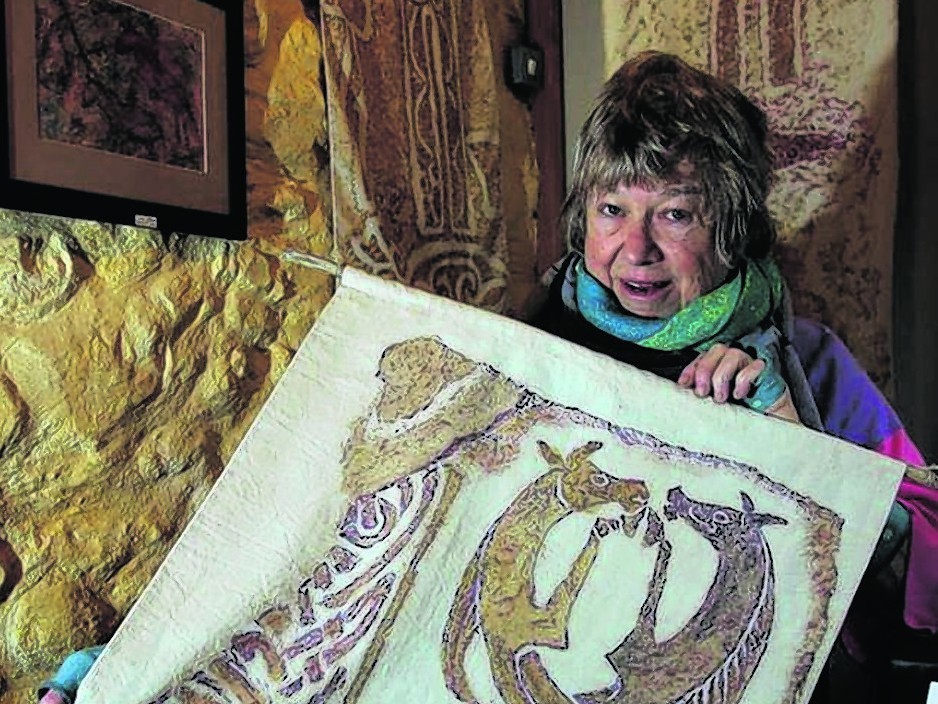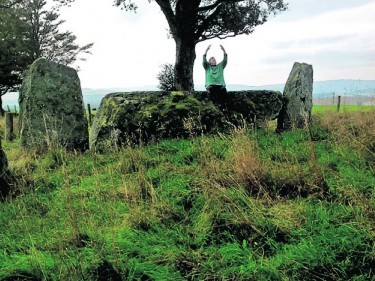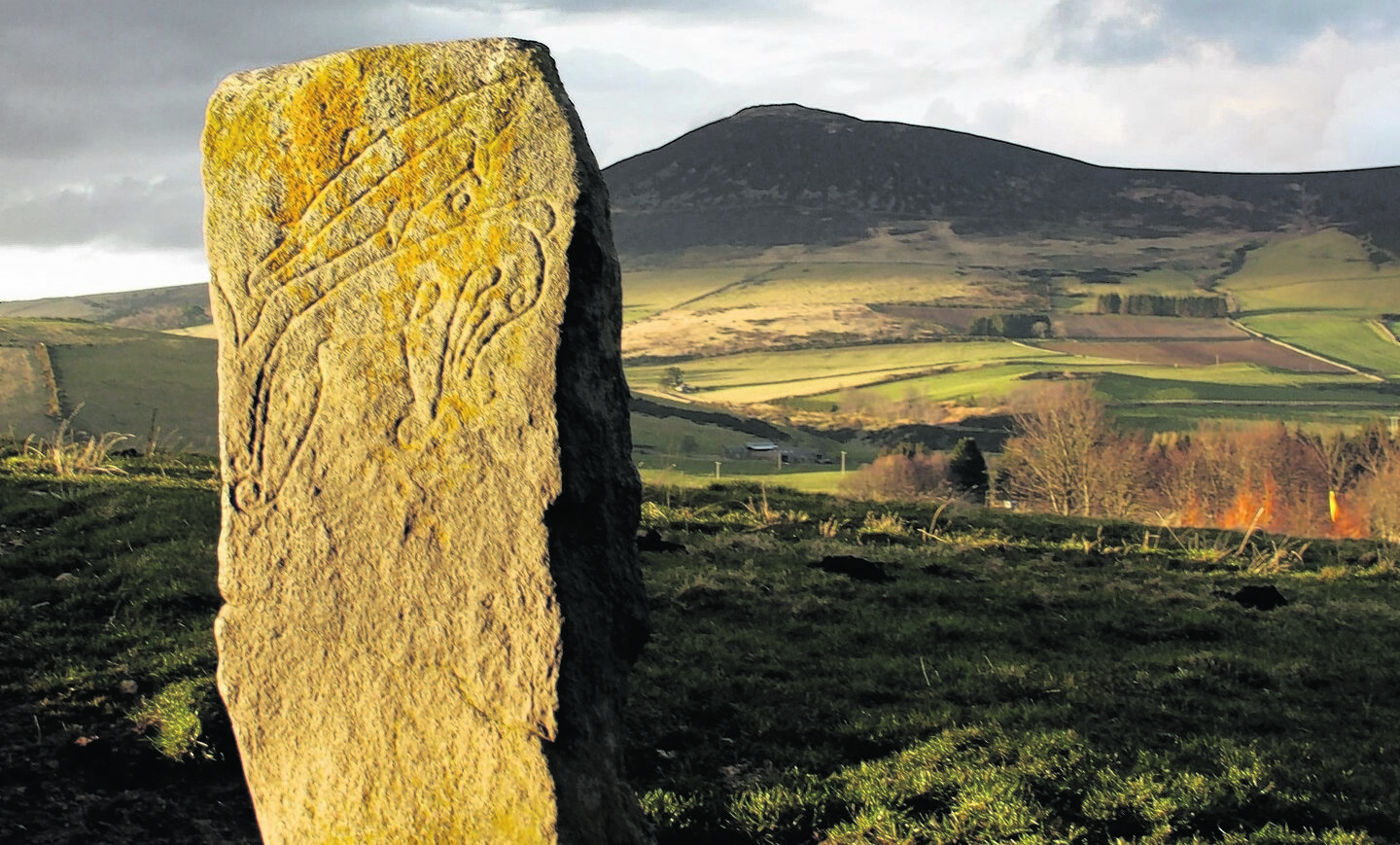Since coming to Scotland in 1977, American author Marianna Lines has been captivated by Scotland’s Pictish standing stones. It’s a subject she’s passionate about and has shared with others in her book A Traveller’s Guide to Sacred Scotland. Here, freelance historian Graeme Cruickshank reviews the book and highlights some of the many stones worth visiting.
This Scottish treat comes courtesy of an American from Atlanta, Georgia, who has lived in this country since the 1970s, spending lengthy periods at the Findhorn Community, at Foulis, near Dingwall, Edinburgh and, for the past dozen years, at Collessie, in Fife, having converted an old thatch-roofed public wash-house into an artist’s studio.
Marianna Lines was drawn immediately towards Scotland’s ancient past and, in particular, the Picts, being fascinated by the great legacy of sculptured stones which they have bequeathed to us. Inspired by the artistic possibilities which they offered, she has staged several exhibitions of her spectacular hangings, featuring a wide range of these stones, the images having been created by the sensitive application of natural dyes to fine linen. Several of these, shown in exhibition galleries and also in the field, enliven the pages of the book.
This pocket-sized paperback is packed full of detailed information, delivered at a frenetic pace. Time for contemplation comes for the reader upon arrival at the sites, whether they are seated in an armchair at home or standing in the field in the presence of an evocative reminder of the past. The work is illustrated profusely in colour, each image tagged with its acknowledgement, a hugely useful device which saves the curious reader from the tedious chore of combing through a list.
In the context of this book, the word “sacred” should not be aligned tightly with “religious”, for it is used here in expansive fashion to encompass anything which radiates a spiritual content. Handily for the traveller, the book divides Scotland into 11 geographical areas. This not only allows for a broad mix of subject matter, but throws up regional specialities.
In Aberdeenshire, for example, the dominant form of ancient monument is the recumbent stone circle (in the old county, that is, north of the Dee), of which a staggering total of 71 are known. The ravages of time mean that many cannot now be appreciated for what they were once, but sufficient remain intact (more or less) to make an indelible impression, upon the landscape and in the mind of the beholder.
The book describes and illustrates a clutch of the best of these: Easter Aquhorthies, Loanhead of Daviot, Sunhoney, Midmar, Aikey Brae, Tomnaverie, Berrybrae and Old Keig. The majority of these monuments are grouped into a tight cluster in the centre of the county, as is evident on the keyed map – a most useful feature, one preceding each of the 11 sections in the book. The descriptions blend factual information with folklore in an appealing fashion, a necessary approach if these intriguing monuments, and the other classes contained within this guidebook, are to be understood and appreciated. The Maiden Stone, in the Garioch, is as important for its associated legends as for its sculptural accomplishments.
One of the book’s strongest features lies in its treatment of Pictish stones, not just because of the supremely evocative nature of the subject matter, but also because of the empathy which the author so clearly has with them in terms of their inherent spirituality and their sculptural artistry. This topic could easily merit a book to itself. The wonderful collections at Meigle and St Vigeans are summarised (with brutal brevity, some may feel, but borne of necessity). The two spectacular cross-slabs at Rightly, Aberlemno, Crosston and Kirkton get mentions, although somewhat restricted in terms of their visual treatment.
The Four Giants of the North (at Shandwick, Rosemarkie, Nigg and Hilton of Cadboll) certainly get their due in fine style. The first named is shown in two wholly different ways, one with it shrouded in linen, its wonderful carvings being brought out in splendid fashion by Marianna’s colourful natural dye impression, set against a sunny backdrop of grassland, sea and sky; the other depicting its reverse side, fixed in its modern glass prison. The last named has a full-size modern replica standing erect on its ancient site, the original (somewhat weathered) stone now safely preserved within a museum.
The dyed linen technique is used a number of times in the book, none more effectively than with the symbol stone at Logie Elphinstone, which is “presented on site”, as the caption puts it. It is strongly reminiscent of the treatment given by Marianna to one of the Rhynie group (No.5) on the album cover of The Roke (New Alba Recordings, 1989), which features Comati, by Robbie the Pict, claimed as the Pictish National Anthem. It works well again in the case of the Collessie Stone, in Fife.
Not so far away, the stone at Strathmiglo benefits from the juxtaposition of natural pillar and linen hanging. Likewise, the slab on Hunter’s Hill, outside Glamis, is shown in its charming sylvan setting, with the sculptural detail being supplied by a dyed hanging, although no such favour is done for its more illustrious neighbour down in the manse garden, where the large cross is only just visible in the photograph.
The wondrous topic of fire festivals is discussed as a unified entity, and
ranges from the famous Up-Helly-Aa in Shetland to the lesser-known Biggar Bonfire in south Lanarkshire. Others to get a mention include the Stonehaven Fireballs and the Comrie Flambeaux, with a special place reserved for the Burghead Clavie, which concludes on Doorie Hill within the ramparts of a Pictish promontory fort, once adorned, so it is thought, with stone tablets (30 or more), each bearing the iconic figure of a bull, six of which still survive.
Marianna Lines has put a power of work into this comprehensive compendium, at the cost of many a long day and night’s toil, but it is very evident that it has all been worth the effort when the result is so informative to the mind and pleasurable to the eye.


